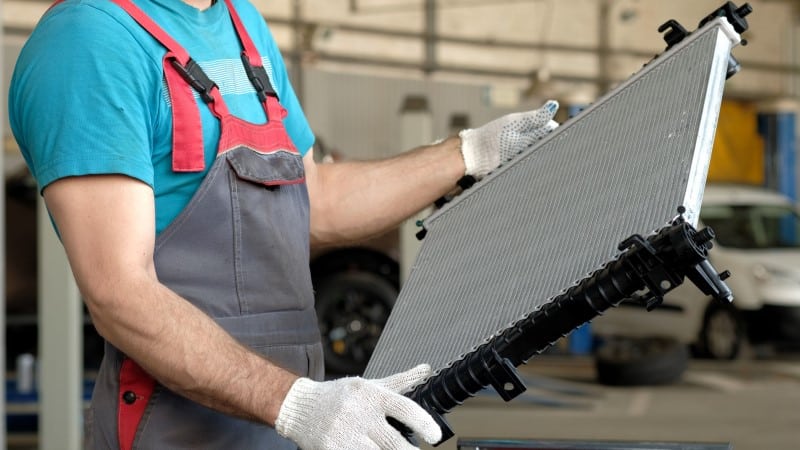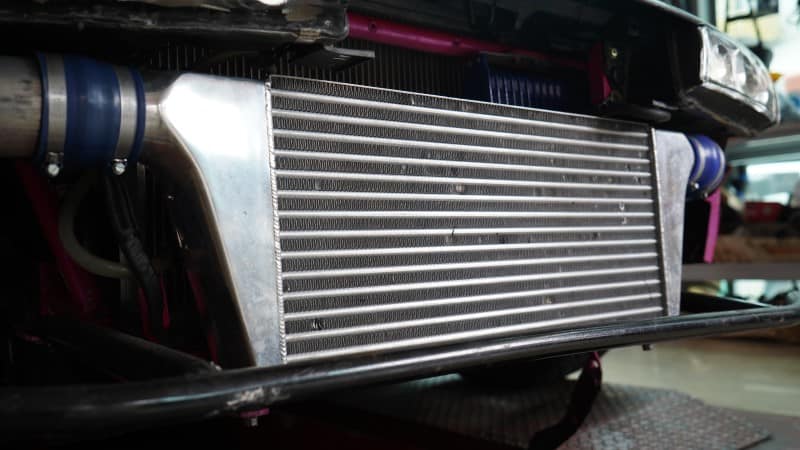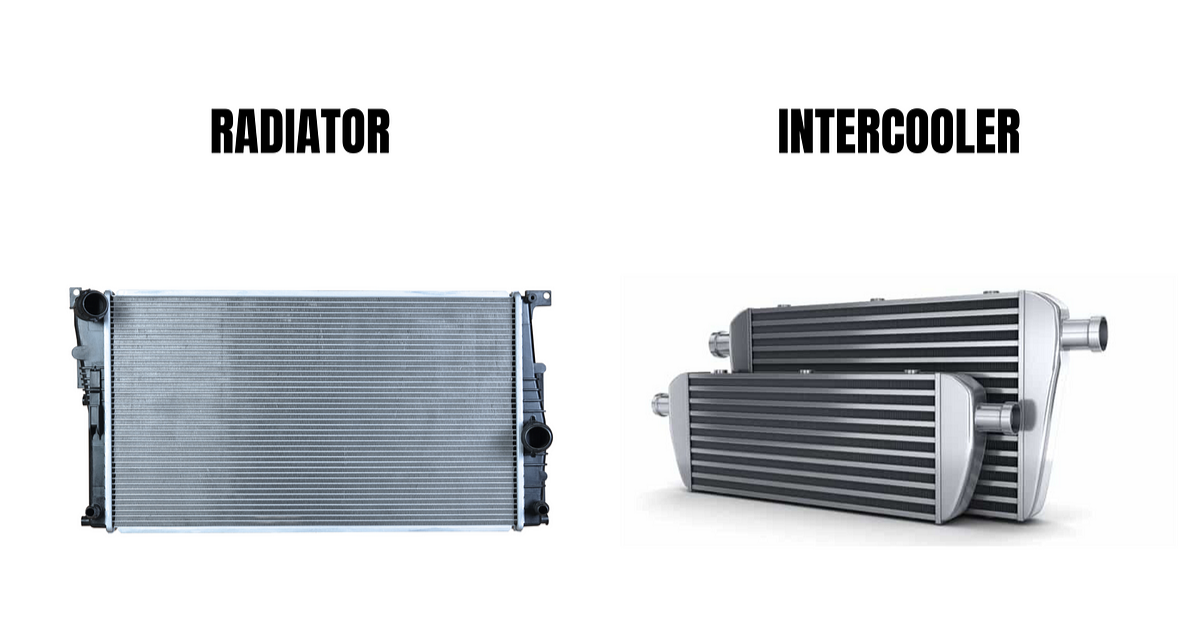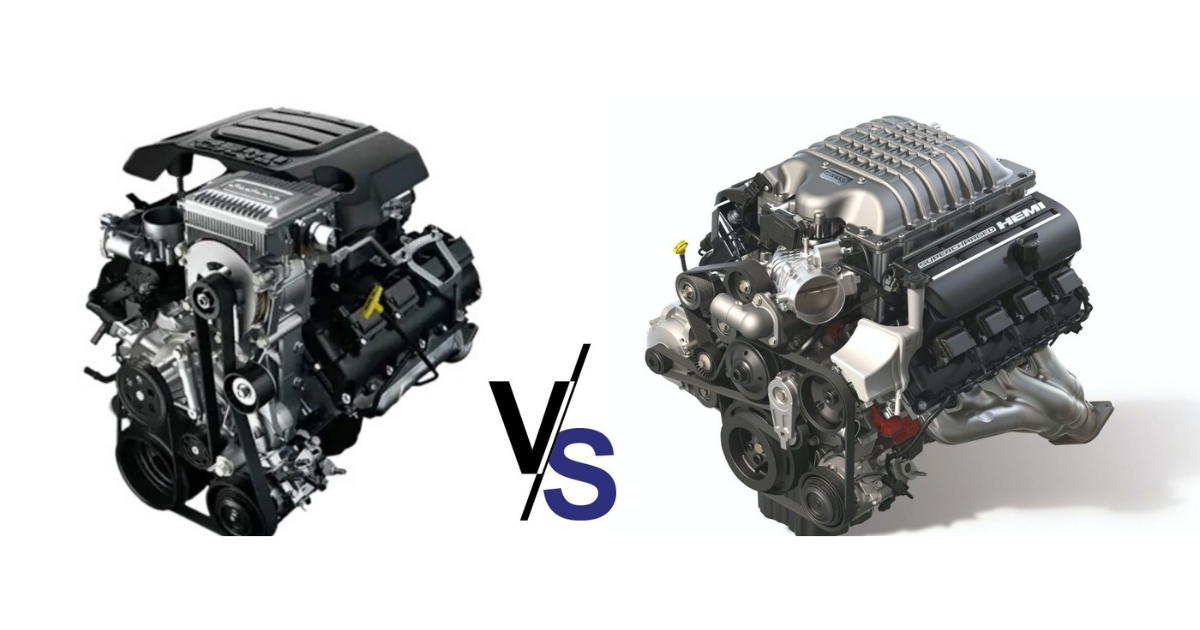Difference between radiator and intercooler. In reality, how are these two different? Many people who use vehicles do not understand the distinctions or how these technologies work, as we have discovered. While some of them have accurate knowledge, the majority are completely clueless, and we’re sure there are many more people who could need some education on the matter.
How Does Radiator Work?

A radiator is a component in an automobile that helps dissipate heat by directing coolant via thin metal fins. In fan-equipped automobiles, air is forced across the radiator to help dissipate heat.
The reality is that when engines are running, they produce a great deal of thermal energy. To keep the engine from overheating, the cooling system of your vehicle circulates coolant to the engine, which absorbs heat from the engine and transfers it away from the block. Your engine generates heat, and the radiator transfers that heat to the atmosphere by drawing air across the coolant.
The pressure cap, core, outlet, and intake tanks are all essential parts of the radiator that work together to transmit heat.
Radiators made of aluminum or copper are standard on many modern automobiles. Mounted tubes carry the coolant from the inlet tanks to the outlet tanks. Because of the tabulator inside the tubes, the flow of fluid (coolant) through them becomes more turbulent.
It is the temperature differential between the coolant and the tubes that determines the quantity of heat transmitted to the tubes from the coolant running through them. Thus, less heat will be transferred to the tubes if the coolant’s temperature drops rapidly.
How Does Intercooler Work?

Intercooler turbo engines use a forced induction system—a supercharger or a turbocharger—to lower the intake air temperature. An intercooler is a mechanism that does this.
Prior to entering the engine, the air is cooled down by the intercooler after being compressed by the supercharger or turbo.
The turbocharger works by increasing the density of the air before it reaches the engine cylinders through compression. You can increase your machine’s power by using an engine, which works by forcing air into its many cylinders, which effectively burns fuel.
The high temperatures produced by this process raise the air temperature that is introduced into the engine. However, the oxygen concentration of the different cylinders decreases as the air temperature rises because it gets less dense. All of this reduces the efficiency of your engine.
The intercooler in your vehicle will come into play now. This method is opposed to it. Bringing the compressed air down to a more manageable temperature allows for more oxygen to reach the engine’s combustion chambers, resulting in more efficient engine operation.
You should also be aware that improving the engine’s efficiency through a higher fuel mileage ratio is achieved by lowering the temperature of the compressed air.
There are two distinct kinds of intercoolers: those that connect air to air and those that connect air to water. The first one works by transferring the pressed air via cooling fins and tiny tubes. You may transport the heat from the compressed air to your cooling fins, and the fast airflow outside your moving car will keep those fins cold.
The engine manifold is the final destination for the cooled compressed air before it reaches the cylinders, after passing via the intercooler. Turbocharged vehicles often choose for air-to-air intercoolers due to their simplicity.
The second type of intercooler, known as an air-to-water intercooler, employs water to reduce the temperature of the compressed air. Pumping water through a device that extracts heat from air is how the system works. After the water is heated, it returns to the intercooler after going through the cooling circuit, also known as a radiator.
Because of its reduced footprint, an air-to-water intercooler is an excellent choice for engines that are short on room. This intercooler works best for a broad temperature range since water is a far greater heat conductor than air. But you won’t find them in the engines of most cars.
Conclusion
Alright, folks, now you know the difference between an intercooler and a radiator. As you can see for yourself, it’s not hard at all. You must ensure that you have accurate information, particularly on your vehicles, so that you do not damage your prized possession as a result of misunderstandings. It’s deeply painful.
Please do not hesitate to contact us for more clarification on any vehicle-related topics or device-related mechanics, such as the Aftercooler vs. intercooler. Alright, we’ll take care of you.




